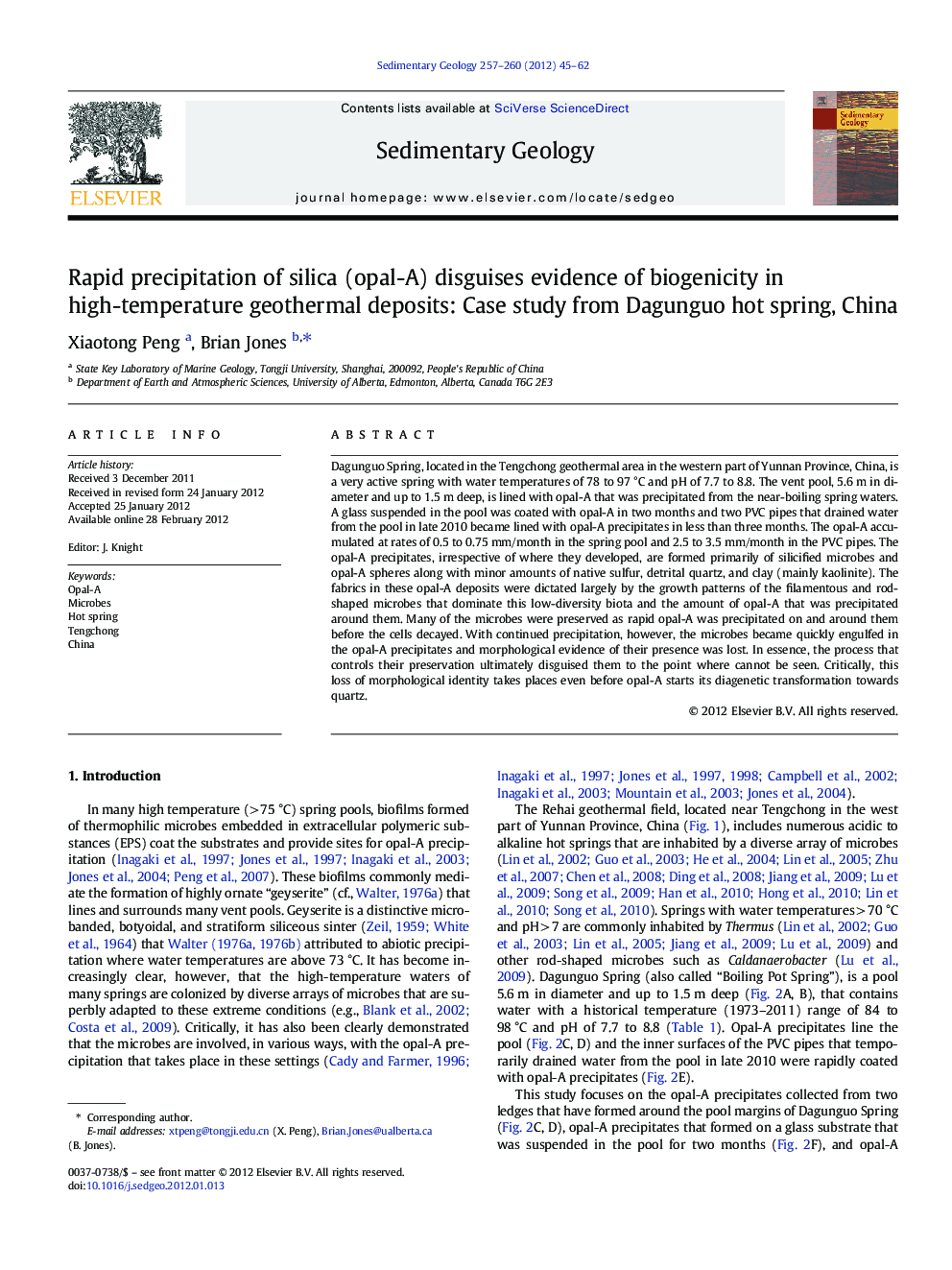| کد مقاله | کد نشریه | سال انتشار | مقاله انگلیسی | نسخه تمام متن |
|---|---|---|---|---|
| 4689812 | 1636092 | 2012 | 18 صفحه PDF | دانلود رایگان |

Dagunguo Spring, located in the Tengchong geothermal area in the western part of Yunnan Province, China, is a very active spring with water temperatures of 78 to 97 °C and pH of 7.7 to 8.8. The vent pool, 5.6 m in diameter and up to 1.5 m deep, is lined with opal-A that was precipitated from the near-boiling spring waters. A glass suspended in the pool was coated with opal-A in two months and two PVC pipes that drained water from the pool in late 2010 became lined with opal-A precipitates in less than three months. The opal-A accumulated at rates of 0.5 to 0.75 mm/month in the spring pool and 2.5 to 3.5 mm/month in the PVC pipes. The opal-A precipitates, irrespective of where they developed, are formed primarily of silicified microbes and opal-A spheres along with minor amounts of native sulfur, detrital quartz, and clay (mainly kaolinite). The fabrics in these opal-A deposits were dictated largely by the growth patterns of the filamentous and rod-shaped microbes that dominate this low-diversity biota and the amount of opal-A that was precipitated around them. Many of the microbes were preserved as rapid opal-A was precipitated on and around them before the cells decayed. With continued precipitation, however, the microbes became quickly engulfed in the opal-A precipitates and morphological evidence of their presence was lost. In essence, the process that controls their preservation ultimately disguised them to the point where cannot be seen. Critically, this loss of morphological identity takes places even before opal-A starts its diagenetic transformation towards quartz.
Journal: Sedimentary Geology - Volumes 257–260, 1 June 2012, Pages 45–62